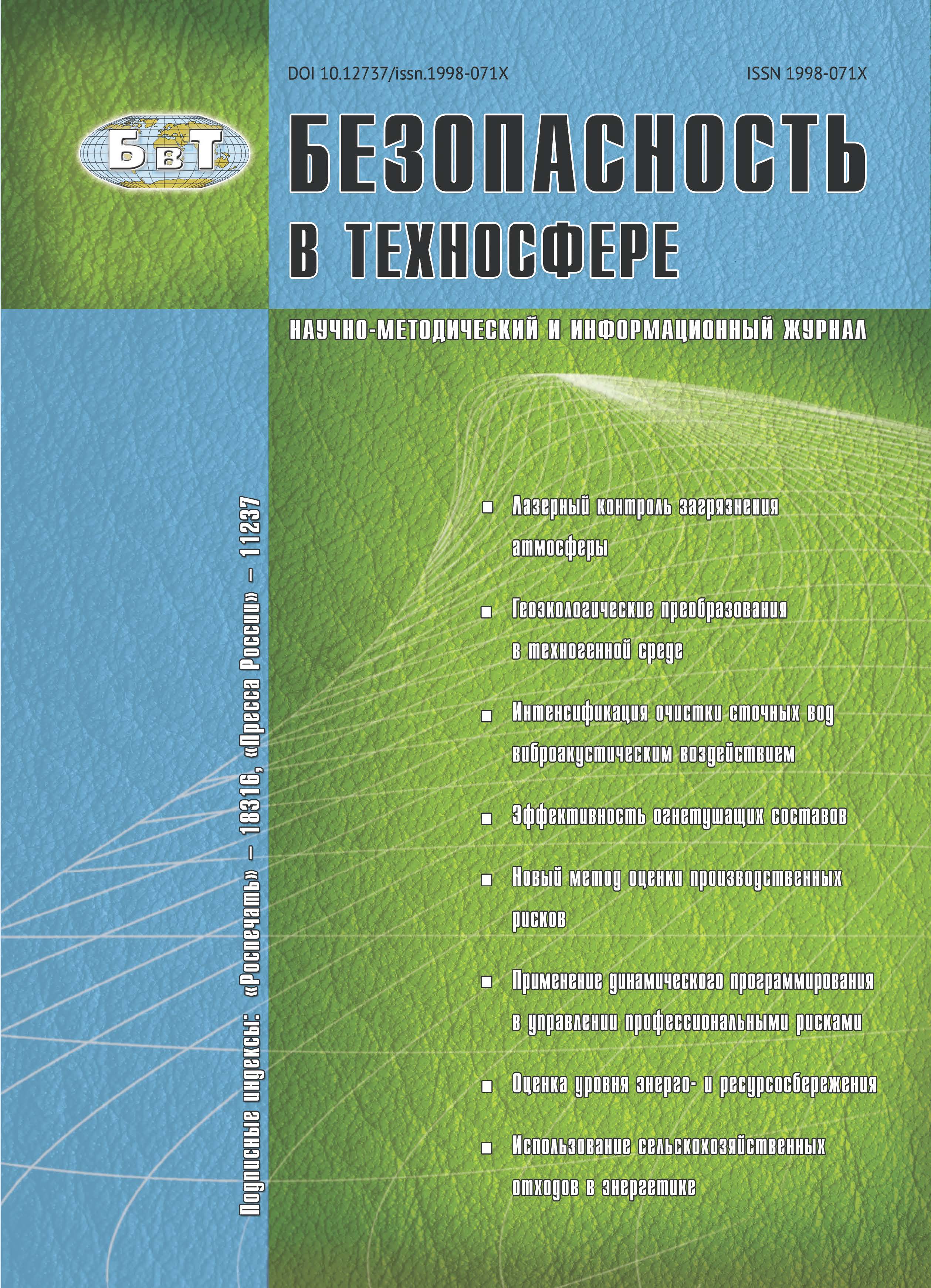Green areas perform many ecosystem services for increasing and supporting the quality of urban environment. Thus, most factors of people’s welfare depend on and are defined by preservation of greeneries, especially in urban areas with their dense population and intensive anthropogenic impact that create increased ecological risk. Risk is a qualitative or quantitative estimation of a hazard linked to undesirable consequences and losses. Risk estimation consists of several stages: risk identification, analysis, assessment. The paper is based on long-term field studies of green areas in several dozen settlements (predominantly urban). The field data was recorded in standard geobotanical descriptions and forms as well as in author’s specially developed ecological assessment charts and defect lists. The main reasons, tendencies and factors of degradation and destruction of green areas were analyzed. A green area’s inability to fulfill its functions was estimated as the main risk. Nine event groups or secondary risks were described in the structure of the main risk: destruction and loss of species diversity, its substitution, simplification of vertical and horizontal structure, diseases, infliction of harm, inhibition and loss of decorative value. Classification and estimation of the risks are proposed, the main factors that cause a green area’s inability to fulfill its ecological functions are described: construction works, works for housing and public utilities, car runovers, recreational activities, trampling down, damaging and littering. The calculation of probabilities for the risk factors was carried out and their patterns were defined.
green areas, risk, loss of species diversity, risk factors, assessment criteria.
1. Введение
Приоритетными направлениями достижения целей зеленой экономики и устойчивого развития человеческих поселений, связанных с повышением качества среды проживания, можно считать увеличение площади озелененных территорий (ОТ) и сохранение их надлежащего состояния [1–5]. Как любая часть техносферы, зеленые насаждения (ЗН) и ОТ находятся под повышенным антропогенным влиянием разной степени интенсивности, которая преимущественно приводит к ухудшению их состояния. Эффективное восстановление этих подсистем может быть обеспечено за счет оптимизации процессов содержания и своевременного мониторинга состояния и преимущественного предупреждения проявления риска. Риск как фактическая мера опасности идентифицируется с целью управления им — предотвращения или уменьшения травматизма, разрушения материальных объектов, потери имущества и негативного воздействия на окружающую среду [6]. Важность и необходимость управления риском имеет много различных аспектов. Например, финансовые выгоды будут обеспечены своевременным планированием затрат на восстановление, а безопасность и здоровье населения могут быть компенсированы выполнением озелененными территориями своих экологических функций [1, 6, 7]. Для управления риском его необходимо проанализировать и оценить. Анализ риска является частью системного подхода к принятию политических решений, процедур и практических мер для предупреждения или уменьшения опасности промышленных аварий для жизни человека, заболеваний или травм, ущерба имуществу и окружающей среде.
1. Nil’s I. Meyer Analiz global’nogo «zelenogo» perekhoda [analysis of the global “green” transition]. Bezopasnost‘ v tekhnosfere [Safety in technosphere]. 2015, I. 1 (52), pp. 3-11. DOI:https://doi.org/10.12737/8225.
2. James P. Urban Sustainability in Theory and Practice: Circles of Sustainability. London: Routledge, 2015. 250 p.
3. Luttik J. The value of trees, water and open space as reflected by house prices in the Netherlands. Landscape and Urban Planning, Volume 48, Issues 3-4, 1, P 161-167.
4. Nyuk Hien Wong, Chen Yu. Study of green areas and urban heat island in a tropical city. Habitat International. Volume 29, Issue 3, P. 547-558.
5. Ramos-Gonzalez O.M. The green areas of San Juan, Puerto Rico. Ecology and Society. Vol. 19, No. 3, Art. 21. Available at: http:// www.ecologyandsociety.org/vol19/iss3/art21/ (accessed 21 December 2015).
6. Risk Assessment. Available at: http://www.epa.gov/risk_assessment/basicinformation.htm (accessed 21 December 2015).
7. Environmental risk. Available at: http://usa.marsh.com/ RiskIssues/EnvironmentalRisk.aspx (accessed 21 December 2015).
8. OON-Khabitat. Ofitsial’nyy sayt. Available at: http://www.un.org/ru/ga/ habitat (accessed 21 December 2015). (in Russian)
9. Lidingö is the greenest urban area. Available at: http://www.scb.se/en_/Finding-statistics/Statistics-by-subjectarea/Environment/ Land-use/ Green-areas-within-andin-the-vicinity-of-urban-settlements/Aktuell-Pong/12905/Behallare-for-Press/390926/ (accessed 21 December 2015).
10. GOST R ISO 31000-2010 “Menedzhment riska. Printsipy i rukovodstvo” [GOST R ISO 31000-2010 “Risk management. Principles and Guidelines”]. Available at: http://vsegost.com (accessed 21 December 2015). (in Russian)
11. GOST R ISO/MEK 31010-2011. “Menedzhment riska. Metody otsenki riska” [SO / IEC 31010-2011. “Risk management. Methods of risk assessment”]. Available at: http://vsegost.com (accessed 21 December 2015). (in Russian)
12. GOST 28329-89 “Ozelenenie gorodov” [GOST 28329-89 “urban greening”]. Moscow, Standartinform Publ., 2006. (in Russian)
13. Potapova E.V. Metodologiya nauki: problemy primeneniya na urbanizirovannykh territoriyakh [The methodology of science: application problems in urban areas]. Materialy XI Mezhdunarodnoy nauchno-prakticheskoy konferentsii “Science and Civilization-2015” [XI International scientific conference “Science and Civilization-2015.”]. Science and Education LTD, Velikobritaniya, Sheffild 30.01-7.02.2015, pp. 21-23. (in Russian)
14. Potapova E.V., Zelinskaya E.V. Funktsional’noe zonirovanie territorii gorodov [The functional zoning of cities]. Vestnik IRGTU [Bulletin of Irkutsk State Technical University]. 2014, I. 7 (90), pp. 43-50 (in Russian)
15. Metodiki otsenki ekologicheskogo sostoyaniya zelenykh nasazhdeniy obshchego pol’zovaniya Sankt-Peterburga [Methods of evaluating the ecological state of public green spaces of St. Petersburg]. Available at: http://gov.spb.ru (accessed 21 December 2015). (in Russian)
16. Potapova E.V. Identifikatsiya ekologicheskikh riskov dlya ozelenennykh territoriy gorodov [Identification of environmental risks plot of land for the cities]. Izvestiya IGU. Seriya “Nauki o Zemle” [News of Irkutsk State University]. 2015, V. 11, pp. 83-94/ (in Russian)
17. RD 08-120-96 “Metodicheskie ukazaniya po provedeniyu analiza riska opasnykh promyshlennykh ob”ektov” [RD 08-120-96 «Methodical instructions for risk analysis of hazardous industrial facilities»]. Available at: http://www.complexdoc.ru/ntd/ 487817 (accessed 21 December 2015).






